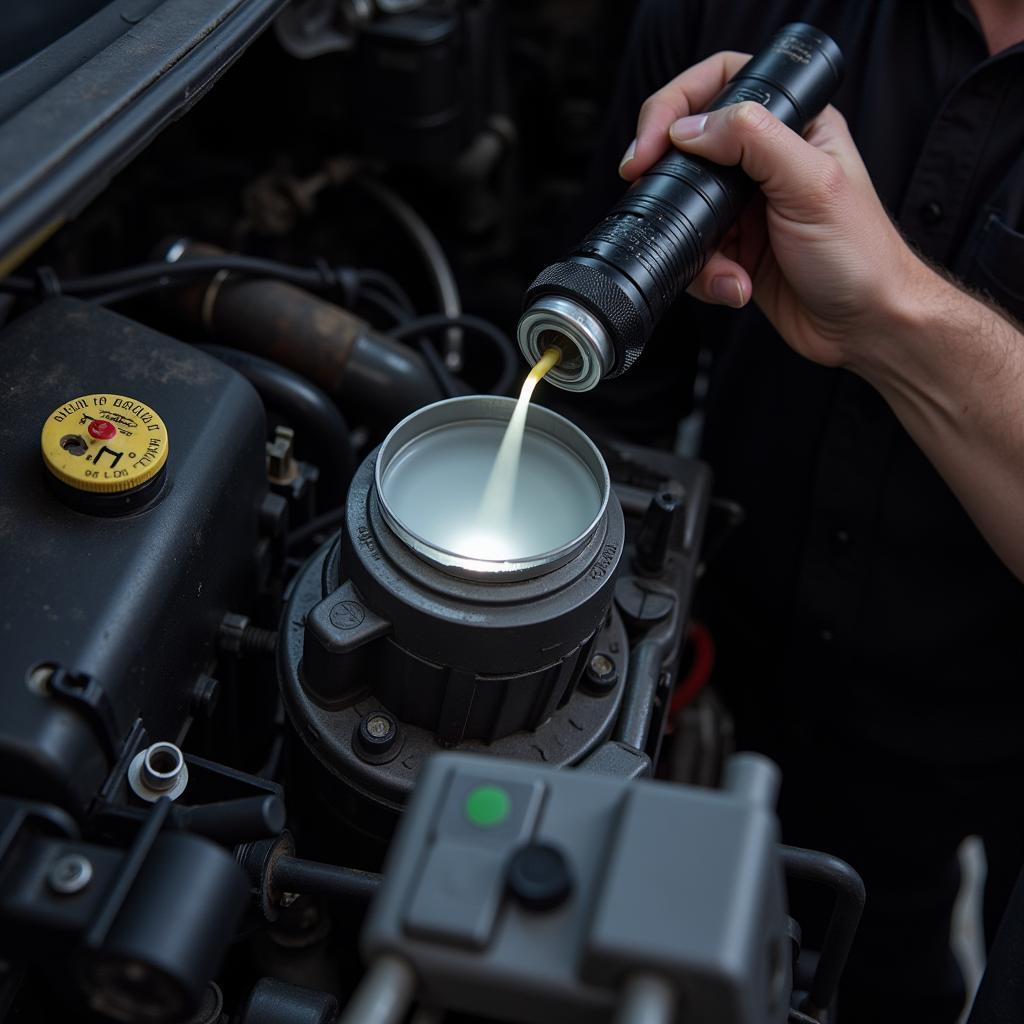A glowing brake warning light on your 1984 Corvette is never a welcome sight. While it might send a shiver down your spine, understanding the potential causes and knowing how to troubleshoot the issue can save you time, money, and potential headaches down the road.
This article delves into the common reasons why your 1984 Corvette’s brake warning light might illuminate, equipping you with the knowledge to diagnose and potentially fix the problem.
Common Culprits: Why is My 1984 Corvette Brake Warning Light On?
There are several reasons why your 1984 Corvette’s brake warning light might be on. Let’s break down the most common culprits:
-
Low Brake Fluid: This is often the first suspect. Brake fluid is the lifeblood of your Corvette’s braking system. Over time, brake pads wear down, and the fluid level in the master cylinder naturally drops. If it drops below a certain point, the warning light will activate.
-
Worn Brake Pads: Brake pads have a finite lifespan. As you use your brakes, the friction material wears down. If they wear down too thin, the warning light will come on, signaling it’s time for a replacement.
-
Faulty Brake Pressure Warning Switch: The brake pressure warning switch plays a crucial role in monitoring your Corvette’s brake fluid pressure. If it malfunctions or gets stuck, it can trigger the warning light even if there’s no actual problem with the brake fluid level.
-
Brake System Leak: A leak anywhere in the brake system, from the master cylinder to the brake lines or calipers, can cause a drop in pressure and illuminate the warning light. Leaks need immediate attention as they compromise your Corvette’s ability to stop safely.
-
Parking Brake Engaged: It may seem obvious, but sometimes the simplest explanation is the most likely. If your parking brake is even slightly engaged, the warning light might stay on.
 1984 Corvette Brake Fluid Reservoir
1984 Corvette Brake Fluid Reservoir
Troubleshooting Your 1984 Corvette Brake Warning Light: A Step-by-Step Guide
Before you start, remember that safety is paramount. If you’re uncomfortable working on your Corvette’s braking system, it’s best to leave it to a qualified mechanic.
Step 1: Check the Parking Brake
Start with the simplest possibility. Ensure your parking brake is fully disengaged. If the warning light stays off after releasing it, you’ve solved the problem.
Step 2: Inspect the Brake Fluid Level
Locate the brake fluid reservoir under the hood. It’s typically a clear plastic container with “DOT 3” or “DOT 4” marked on the cap. Check the fluid level. If it’s below the “MIN” line, add the correct type of brake fluid until it reaches the “MAX” line.
Step 3: Examine Brake Pads for Wear
If the fluid level is fine, the next step is to inspect the brake pads. Look through the spaces between the wheel spokes to visually check the thickness of the pads. If they appear excessively thin or you hear a scraping sound when braking, it’s time for a replacement.
Step 4: Consider the Brake Pressure Warning Switch
If the brake fluid level is sufficient and the brake pads are in good condition, the brake pressure warning switch might be faulty. This component is best tested by a qualified mechanic who can determine if it’s malfunctioning and needs replacement.
1984 corvette brake pressure warning switch
Step 5: Look for Brake System Leaks
Carefully inspect all the brake lines, hoses, and connections for signs of leaks. Look for wet spots, drips, or any visible fluid. If you suspect a leak, it’s essential to address it immediately as it poses a significant safety risk.
“A small brake fluid leak might seem insignificant, but it can quickly escalate into a major safety hazard,” warns John Smith, a seasoned Corvette mechanic with over 20 years of experience. “Never ignore brake fluid leaks. It’s always best to have them inspected and repaired by a professional.”
When to Seek Professional Help
While some brake warning light issues can be resolved with basic troubleshooting, others require the expertise of a qualified mechanic. Here are instances when it’s crucial to seek professional help:
- You’re uncomfortable working on your Corvette’s brake system.
- You suspect a brake fluid leak.
- The brake warning light remains on after checking the fluid level, pads, and parking brake.
- You’re unsure about any step in the troubleshooting process.
Conclusion: Don’t Ignore That Warning Light!
The brake warning light on your 1984 Corvette is a critical safety feature. Ignoring it could lead to costly repairs or, worse, a dangerous driving situation. By understanding the potential causes and following the troubleshooting steps outlined above, you can address the issue promptly and keep your classic Corvette running safely and smoothly. Remember, when in doubt, always consult a qualified mechanic for expert diagnosis and repair.

